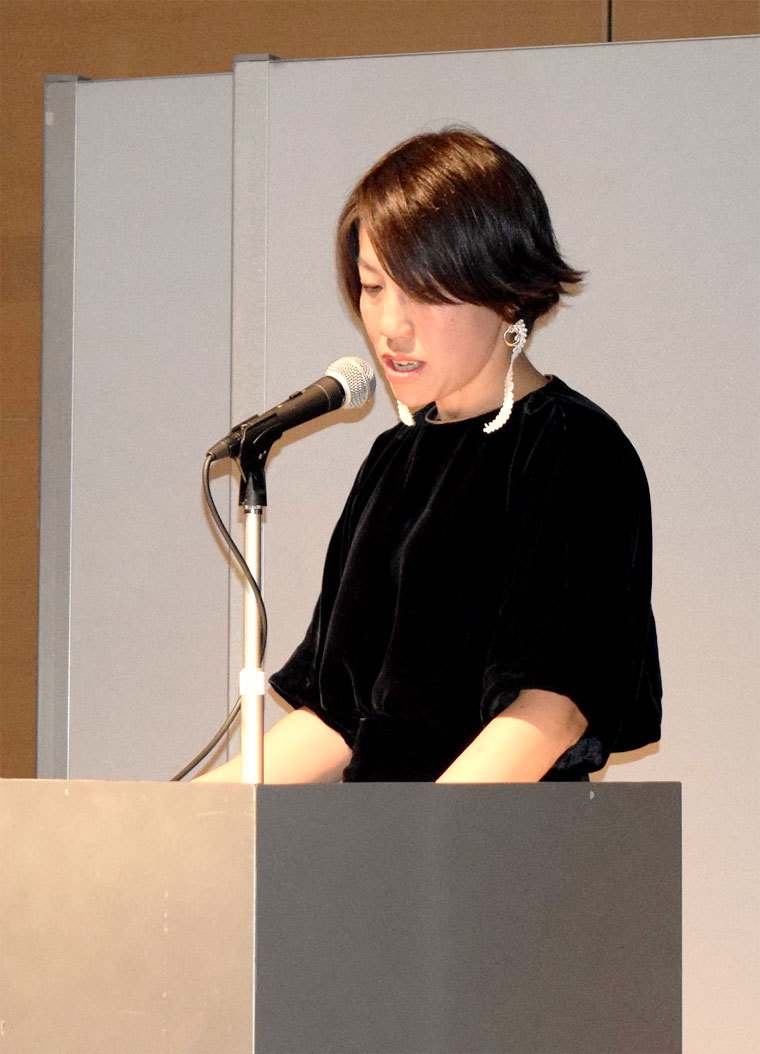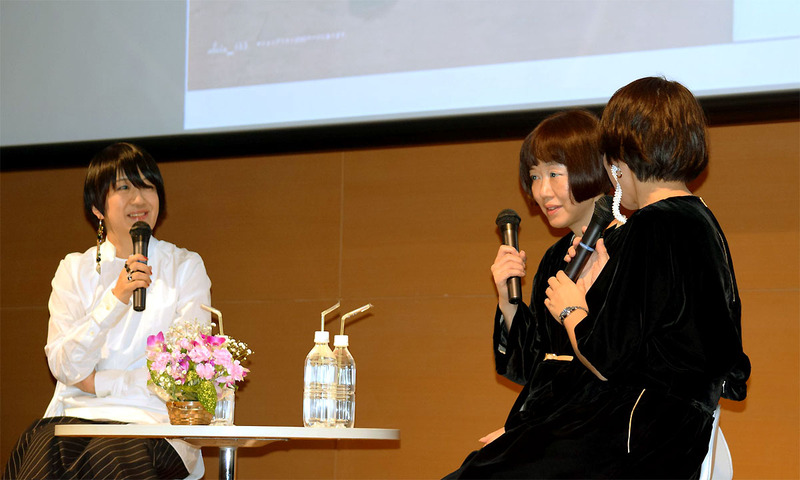The "Olive Girls" Unravel the Cute Culture
Olive, the fashion magazine launched in 1982, continues to enjoy cross-generational support even over a decade after its 2000 hiatus. To commemorate publisher Magazine House's 70th anniversary in 2015, the "Olive Project 2015" was launched. On December 15th, a kickoff seminar was held at Dentsu Inc. Hall in Shiodome, Tokyo. Lectures and talk shows unfolded under the theme "What Captures the Hearts of Olive Girls?"
Analyzing Olive's Concept of "Cute" from the Reader's Perspective
 |
Takahashi from Kanazawa 21st Century Museum |
Appearing at the seminar's outset was Ms. Ritsuko Takahashi, a curator at the 21st Century Museum of Contemporary Art, Kanazawa. An expert on Japanese girl culture and herself a former Olive reader, she introduced the worldview expressed by Olive, using the term "Olive Rules" and focusing on the evolution of "kawaii" (cute), now a global term.
She analyzed that in the 1960s, when "kawaii" began being used in a fashion context, "it was a word representing a romantic worldview, evolved from expressions like 'lovely' or 'beautiful.'" Then, entering the 70s, driven by Hello Kitty's popularity and the shōjo manga boom, "being cute and girlish transformed into 'kawaii.'"
Amidst this trend, Olive, launched in the 80s, "deliberately placed 'cute' rooted in a 60s-inspired worldview front and center, making it a very courageous take on 'cute,'" Takahashi stated. Targeting high school students, the magazine adopted French lycéennes (female high school students) as fashion icons, defining "cute as romantic." He stated that Olive's identity lay in distinguishing itself from the mainstream cute aesthetic of the time. He also noted, "Olive's image of the lycéenne embodied tasteful, cheap chic (stylish yet affordable clothing and possessions) and a spirit of creating 'cute' through personal ingenuity."
Explaining the differences in "kawaii" born from these distinct eras, Takahashi stated: "The 'kawaii' that permeated the 70s was rooted in communication, cultivated through empathy with others like friends. In contrast, the romantic 'kawaii' Olive aimed for was an introspective 'kawaii'—a desire to make one's surroundings and worldview cute." He concluded that this Olive-style "kawaii" continues to live on, not just in fashion, but as a lifestyle compass among women now in their 30s and 40s, known as former Olive girls, and among the younger generation raised in households where "mothers were part of the Olive girl generation" (Takahashi).
Surrounding the Stylists of the Era to Explore Olive's Appeal
Following Takahashi's lecture, Yuko Omori, who handled styling for Olive at the time, and Toshiko Nakajima, Editor-in-Chief of GINZA magazine, joined Takahashi on stage for a talk session titled "Olive Back Then."
Ms. Omori, the only one of the three who worked directly on Olive's editorial team, recalled the editorial department as "truly like a girls' school." She explained that not only did the team have a school-like atmosphere, but "everyone felt like students; in that sense, we created the pages with the same mindset as our readers." She emphasized that as creators, they constantly prioritized the reader's perspective.
Nakajima, who now serves as Editor-in-Chief of GINZA, shared that while working at the same publisher, she viewed the Olive editorial team with admiration, thinking, "They're the ones doing the cute things." From her current perspective, she noted that the magazine's editorial approach, such as its groundbreaking outdoor fashion features for a women's magazine at the time, had a unique charm. Omori responded that they consciously focused on "considering the magazine as the Editor-in-Chief's creation and how each person could play within the Editor-in-Chief's vision." To present a worldview that served as a model for readers, they adhered to "rules" like price restrictions on outfits and only featuring clothes sold in stores. Yet they also allowed creative freedom, such as having models wear geta sandals. Takahashi and Nakajima also commented from a reader's perspective: "It wasn't just the fashion pages; the coverage of subculture like literature (Dazai, Murakami) and film deeply resonated with girls," and "It was more about how to wear things than what to buy." Ohmori also reflected on sources of inspiration: "It was a time before the internet, so we'd gather ideas from various things, like a single imported cafe bowl."
 |
(From left) GINZA Editor-in-Chief Nakajima, Stylist Omori, Kanazawa 21st Century Museum of Contemporary Art Director Takahashi |
The timeless olive makes a comeback
Finally, Nakajima announced that following GINZA's Olive feature in May this year—"which generated such tremendous response that even a 10-page feature kept spreading on social media for a month"—Olive would be "republished" as a special supplement in the March 12, 2015 issue of GINZA. Stylist Omori, who will also handle styling for this issue following the May feature, commented, "We're starting by reading back issues of Olive together with the other members."
Nakajima also explained that the revival project is driven not only by enduring popularity among former Olive girls but also by a favorable trend: "Looking at the Spring/Summer 2015 Paris collections, pure, natural, and supple women are being highlighted. The era of high heels and stiff postures is changing, and this is syncing with Olive's worldview."
Was this article helpful?